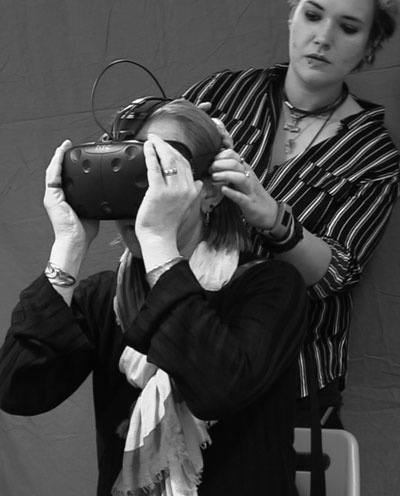Touch and tell about museum objects
VRtefacts puts visitors into a Virtual Reality experience where they explore and touch 3D models of museum objects and share stories about them.
The Visitor Experience



What is the experience like?
VRtefacts is a VR storytelling experience. Visitors can touch an object that has been 3D scanned and overlaid in VR onto a physical 3D print. In the end, visitors are invited to share a personal ‘story’ that comes to mind.
How to implement it?
VRtefacts is a workflow that lists hardware and skills necessary for producing the experience. You can customise the experience by scaling up or leaving out elements, for instance the storytelling element.
Why use VRtefacts?
Visitors can touch objects that they couldn’t touch otherwise. When visitors touch and tell their personal stories, they experience an increased sense of connection to and understanding of the object.
Case Study
A novel and 'real' experience of objects
Read about how VRtefacts proved to be an enjoyable and immersive experience for visitors at Derby Museums.
Telling stories brings the object a bit more life, rather than just thinking about what happened to it.Visitor, Derby Museum
It’s probably the most positive virtual reality experience that I’ve had, and I think that was to do with the touch bit.Visitor, Derby Museum
Actually having something there that people can touch and feel and can see properly, I think it’s quite a good thing to do.Staff member, Derby Museum
Jocelyn Spence and Dimitrios Darzentas from University of Nottingham talk us through the VRtefacts system in these episodes of Computerphile:
How to use?

3D-scan the museum objects – use the ScannerBox workflow.

3D-print the 3D-scans.

Read through our advice on how to make the most of a VR investment.
What are the technical requirements?
More information on technical requirements, guidelines, documentation and software templates is available at vrtefacts.org.
Can the tool be customised?
VRtefacts is by design an approach that is meant to be customised for each individual venue’s needs, budgets, and capacities. From the objects and the environment they are shown in, to the way the stories are captured, each aspect can be adjusted to fit the theme and purpose.
How will the tool be supported?
VRtefacts is launching as a series of experiences with several museum and gallery venues, and is branching out beyond VR into AR (Augmented Reality) experiences. Follow the developments at vrtefacts.org.